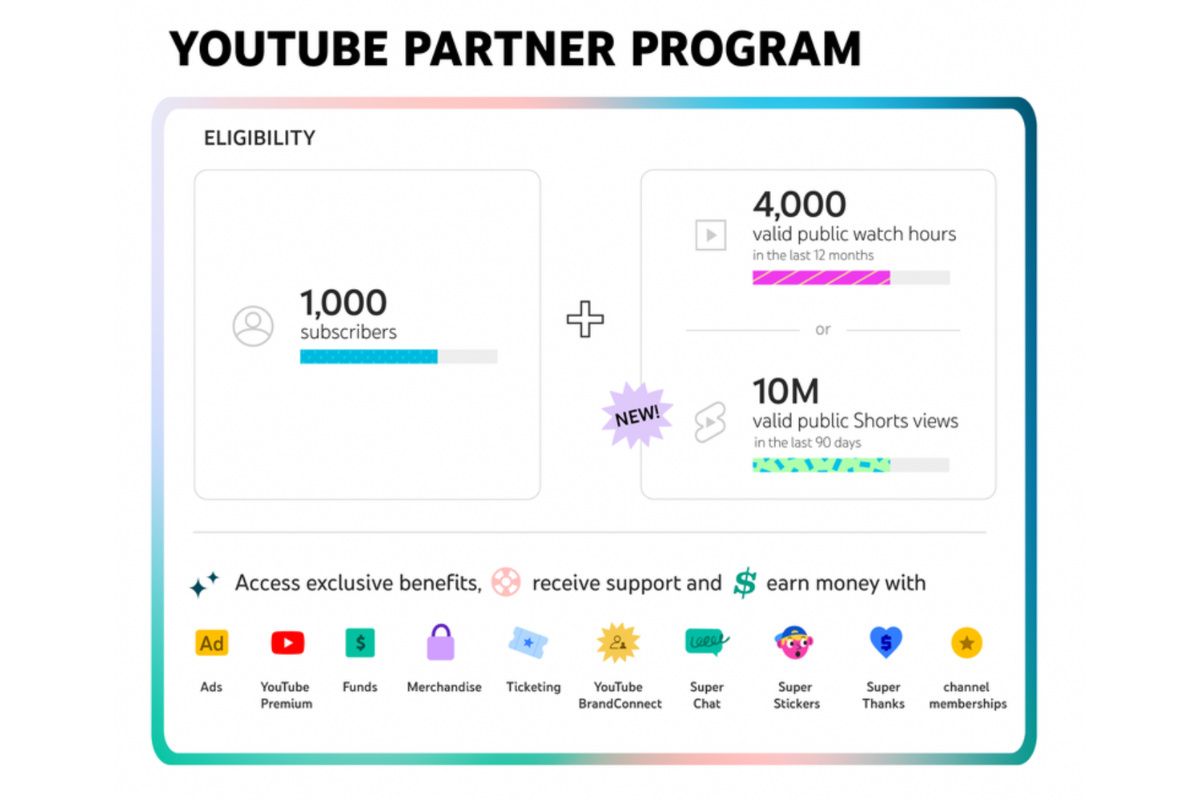The YouTube Partner Program (YPP) has been around since 2007 and since that time, a lot has changed. Currently, YouTube offers a lot of ways to make money if you are a creator on its platform. As reported last week, the company is now introducing new ways for its Shorts creators to enter the program. Starting in 2023, Shorts creators will be able to apply for the YPP by having at least 1,000 subscribes and ten million views over 90 days. Of course, those that qualify will enjoy all of the perks of the program.
In addition, YouTube will now create a lower threshold for new creators. The new level of the YouTube Partner Program will allow creators to take advantage of features like Super Thanks, Super Chat, Super Stickers, and Channel Memberships. YouTube doesn't seem to have all of the details fleshed out for this new program, but stated it would provide an update sometime in 2023. For those hoping to gain quick access to the YPP, YouTube states that nothing will change for its existing criteria. Unfortunately, that means that if you want to properly get into the YPP, you will still need to have 1,000 subscribers and 4,000 watch hours, which is quite a lofty goal for creators just starting out.
So what's changing for Shorts creators that are in the YouTube Partner Program in 2023? Creators that can monetize their content will have ads that run between videos in the Shorts Feed. From these ads, creators will be paid every month and will be able to keep 45 percent of the revenue generated from ads. The ad revenue will also be used to cover the cost of music licensing. Now, you might be asking yourself, what music licensing? YouTube Shorts and long form creators will be able to use copyrighted music freely in their videos, without it impacting the content in a negative way.
Furthermore, Creator Music will be a special section within YouTube Studio that will give creators access to popular music that can be used in long form videos. The creator will have to purchase a license for the music but they will still be able to monetize their content and earn revenue from it. If the creator chooses not to purchase a license but still uses a copyrighted song, the revenue from the video will be split with the artist and the song's rights holder. This feature is currently in beta within the United States and will expand to other regions next year. This new changes coming to YouTube should be a welcome one, as there has been an explosion of creators making short-form content on the platform in the past year.
Source: YouTube Blog

